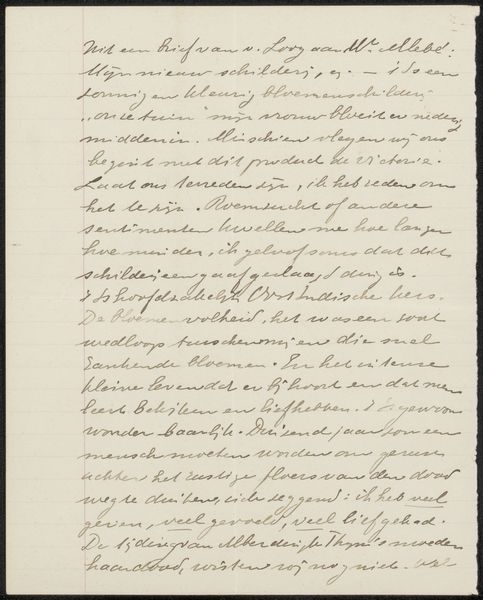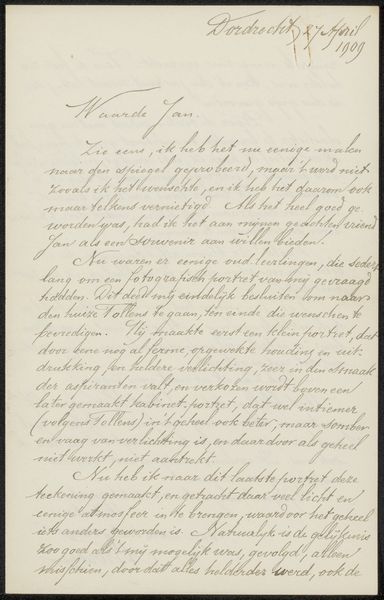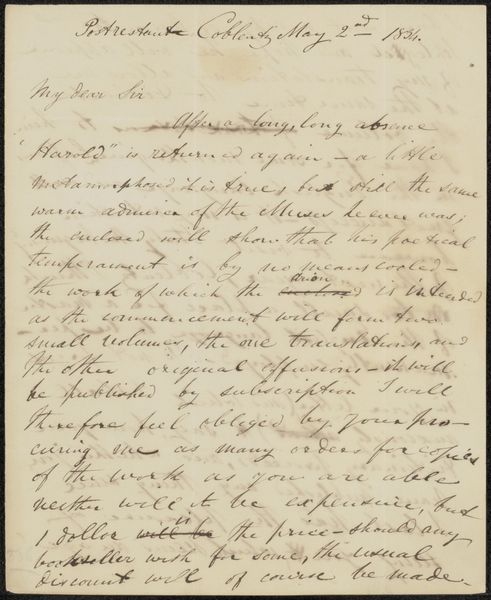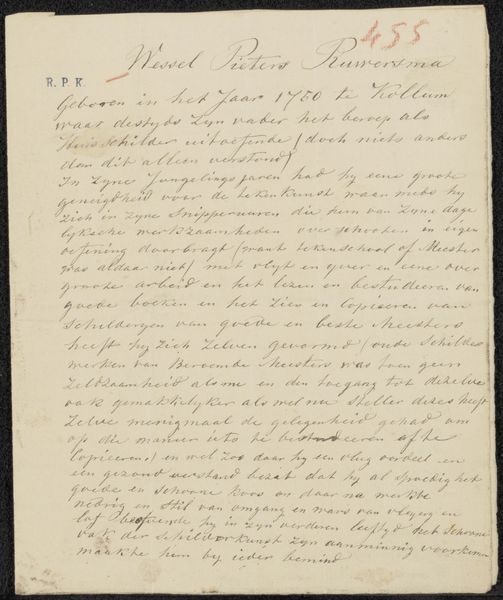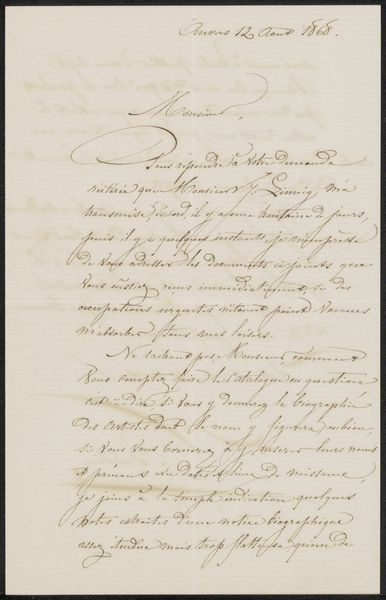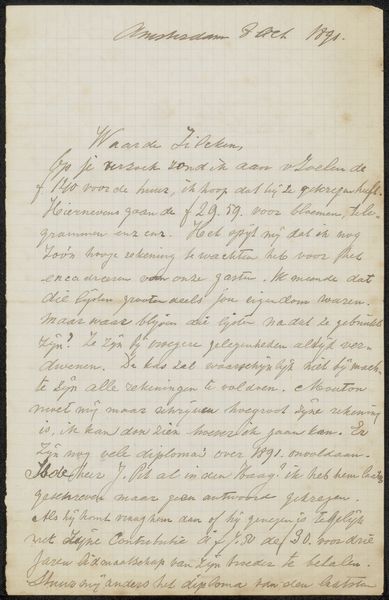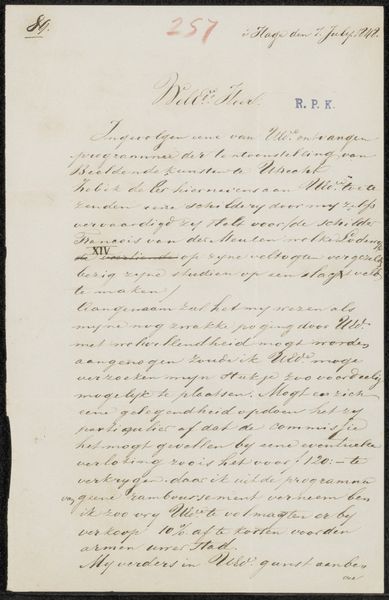
drawing, paper, ink
#
drawing
#
paper
#
personal sketchbook
#
ink
#
italian-renaissance
Copyright: Rijks Museum: Open Domain
Curator: This letter is intriguing; it’s believed to have been written by Antonio Rotta around 1877 or 1878 and is entitled “Brief aan Frans Buffa,” or “Letter to Frans Buffa”. It’s an ink drawing on paper. Editor: At first glance, I’m struck by the intimacy of it, a private correspondence offering a glimpse into the artist’s thought process, especially in its materiality. The script itself seems to reveal his personality. Curator: Absolutely. It appears to be Rotta detailing the composition of a painting in progress. He mentions figures in a cobbler's shop, describing their actions and even their expressions, discussing at length that his recent paintings bear a huge similarity. Editor: That description emphasizes the value of artistic labor, focusing our attention on the craftsmanship behind painting. The mention of the cobbler's shop transforms it into a space where labor and skill converge. Does this subject hold any significance in Venetian social history? Curator: Well, the working class, including artisans like cobblers, were frequent subjects for Rotta, aligning with a broader Realist interest in depicting everyday life. He seemed to appreciate the common man and their toils, although this was never really a publicly showcased drawing. Editor: It's fascinating how he considers the relationship between labor, class, and the viewing public. We might explore how the art market shaped Rotta’s choice of subjects and the narratives he constructed around labor. He also emphasizes a relationship of simple and clean executions in other works. Curator: Furthermore, considering that he mentions his works do not vary a whole lot could emphasize that this specific moment in time captures his stylistic peak as a painter. The cultural and institutional history also come into play if this letter wasn't meant to be published at any point. Editor: This dialogue between the personal, found within the drawing itself, and public presentation of art definitely changes how we read and think of this artwork in its full context. The politics of how and why artists make a living really become pronounced. Curator: I agree. Analyzing the letter through both the lens of materials and labor, as well as its historical and societal context, gives us a more nuanced understanding of Antonio Rotta and his work ethic.
Comments
No comments
Be the first to comment and join the conversation on the ultimate creative platform.

